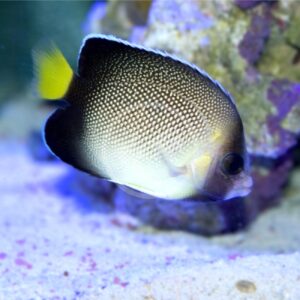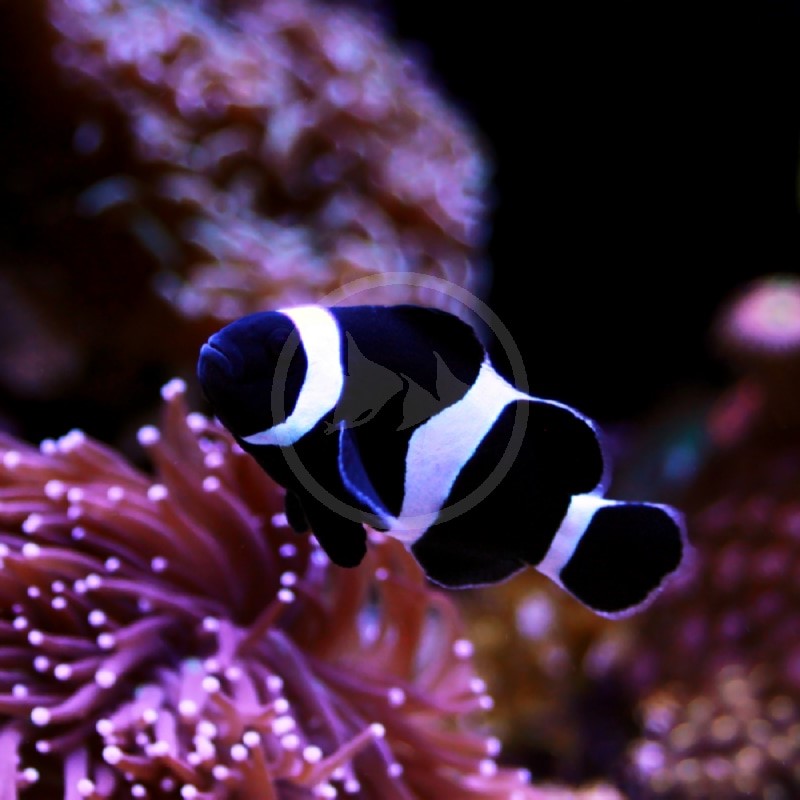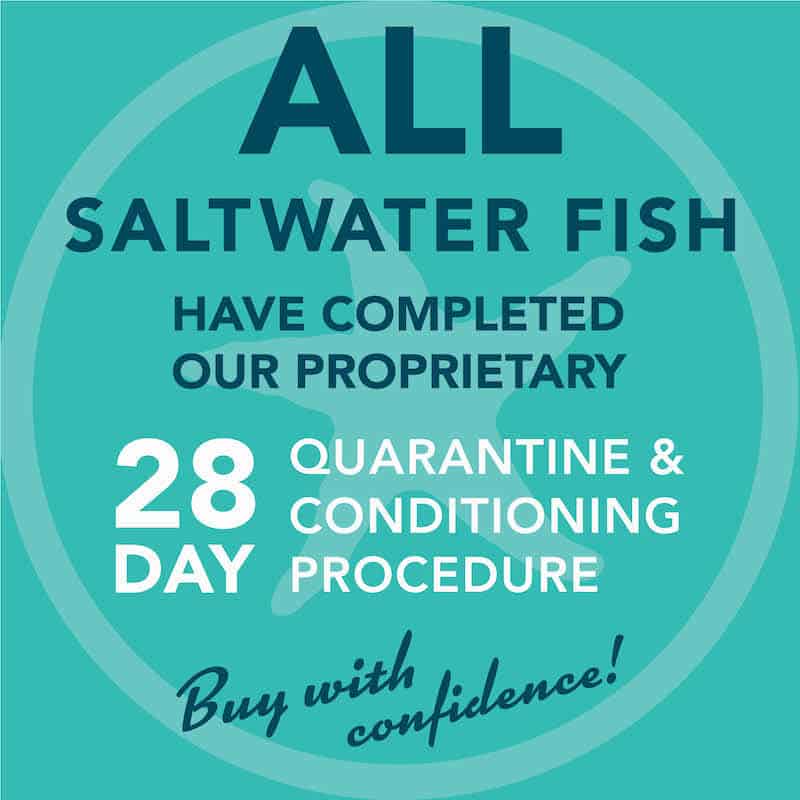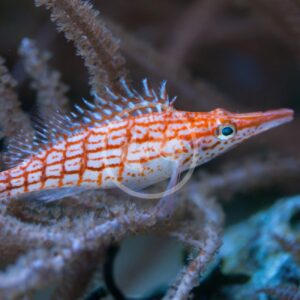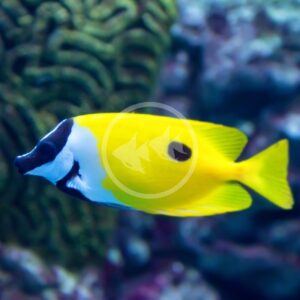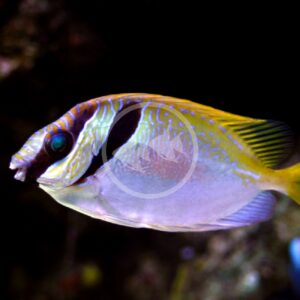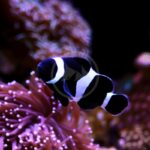
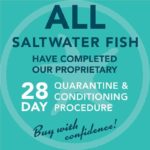
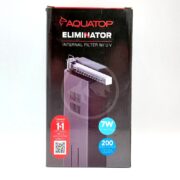
CLOWN – BLACK OCELLARIS PAIR CAPTIVE BRED Amphiprion ocellaris
$79.99 – $169.99Price range: $79.99 through $169.99
The Ocellaris Clownfish, also known as the Common Clownfish or False Percula Clownfish is native to the eastern Indian and Western Pacific oceans ranging from the Andaman and Nicobar Islands, Thailand, Malaysia, and northwest Australia to Singapore, Indonesia, and the Philippines and north to Taiwan and the Ryukyu Islands. Famous for their symbiotic association with various anemone species and their bold coloration, they are one of the most widely recognized and commonly kept marine fish species. They exhibit a rich orange to reddish-brown body colorations with three distinct white bands edged in black. The fins are also all outlined with a thin black line. Clownfish will share a mutual relationship with multiple Anemone including the Sebae, Carpet, and Bubble Tip. This mutual relationship provides the Anemone with protection, cleaning, and possibly even a source of food. The mutual relationship provides Clownfish with protection, as well as a place to nest. Adults may grow up to 4 inches in length, but 3 to 3.5 inches is more common in captivity.
Price is for a Male/Female Pair of Black Ocellaris Clownfish.
Care Level: Easy
Temperament: Peaceful
Reef Compatible: Yes
General Description: The Black Ocellaris Clownfish is a designer clownfish variant selectively-bred from the standard Ocellaris Clownfish (Amphiprion ocellaris). This clownfish variant does not exist naturally in the wild. Black ocellaris clownfish have an entirely black body with white stripes. As juveniles, Black ocellaris clownfish will have an orange nose and some individuals keep this into adulthood. Clownfish are well known for their interesting symbiotic relationships with anemones. An ocellaris clown’s anemone of choice is a Bubble Tip (Entacmaea sp.) anemone. Host anemones provide clownfish with protection and a site for nest building, while the anemone also benefits from its clownfish host in many ways. Interestingly, all clownfish are born male and the most dominant individual in the group will change to female, a process known as hermaphroditism. Females grow larger than males, obtaining a size of approximately 3″ to 3-1/2″ typically in captivity. Clownfish come from the Pomacentridae family, which they share with Chromis and Damsels.
Diet Requirements: Clownfish are omnivorous. A varied diet of high quality algae, proteins, pellets, flakes, and enriched frozen foods are important for best coloration, immune function and optimal health. Clownfish are some of the unfussiest of saltwater livestock when it comes to feeding.
Care Requirements: A minimum 15 to 20 gallon aquarium is ideal for a single, or pair of, Black ocellaris clownfish. A set-up with live rock is best for the health of the aquarium, and this clownfish will appreciate crevices to swim through and take refuge. Clownfish are one of the few groups of fish that can endure the break-in cycle of a new saltwater aquarium. An anemone host should only be added after the aquarium is biologically established. Their peaceful nature makes them an excellent choice to keep with almost all other community reef fish, invertebrates, and corals. We do not recommend keeping more than one pair of clownfish per aquarium, even in larger systems. We do not recommend mixing different genera of clownfish together. Recommended water conditions, 72-78° F, KH 8-12, pH 8.1-8.4, salinity 1.020-1.025.
Purchase Size: Small: 3/4″ or less; Medium: 1″ to 1-3/4″; Large: 2″ to 2-3/4″; XLarge: 3″ or larger.
Note: Your item may not look identical to the image provided due to variation within species. Purchase size is approximate.
Dry goods orders are shipped via US Postal Service or UPS to the address provided at checkout based on the selection made in your website shopping cart. Product is carefully packed to help prevent any damage during shipping. Once processed you will receive a shipment notification via email with tracking number, and delivery notification. Please allow 48 hours for processing after your order is placed.
Perishable items (i.e. live plants, refrigerated/frozen foods) are shipped via US Postal Service 2-3 day to the address provided at checkout for a $25.00 flat rate charge. Items are packed with secure packing material and heat, cold, or Cryo packs as needed to maintain safe temperatures during transit. If one or more perishable items are in the shopping cart at checkout the $25.00 perishable shipping charge will automatically appear and need to be selected. Once processed you will receive a shipment notification via email with tracking number. Please allow 48 hours for processing after your order is placed.
Livestock (i.e. fish, invertebrates, coral) are shipped via UPS Overnight to the address provided at checkout for a $55.00 flat rate charge. Livestock is packed in insulated styrofoam boxes with secure packing material and heat, cold, or Cryo packs as needed to maintain safe temperatures during transit. If one or more livestock items are in the shopping cart at checkout the $55.00 livestock shipping charge will automatically appear and need to be selected. Livestock is shipped Monday through Wednesday ONLY (no weekend delivery is available) weather permitting, and we reserve the right to delay shipping until conditions are appropriate for safe arrival. Once your order is placed we will contact you to arrange the best shipping date based on these criteria. Someone must be available to receive the livestock order on the first delivery attempt. Once processed you will receive a shipment notification via email with tracking number. Please allow 48 hours for processing after your order is placed.
For mixed dry goods/perishable & livestock orders items will be shipped via their corresponding shipping methods outlined above. Dry goods will be shipped via US Postal Service or UPS based on your selection and checkout, while livestock will ship via UPS Overnight for a $55.00 flat rate charge. You will receive separate notifications and tracking numbers for the dry goods and livestock. Please note due to different carriers and shipping methods dry goods and livestock may arrive on different days.
Related products
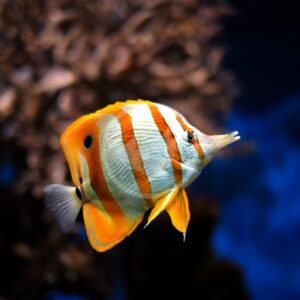
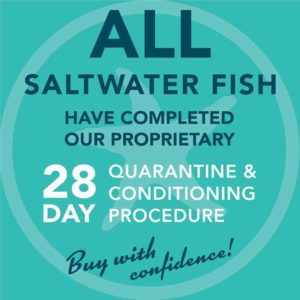
BUTTERFLY – COPPERBAND Chelmon rostratus
$109.99 – $219.99Price range: $109.99 through $219.99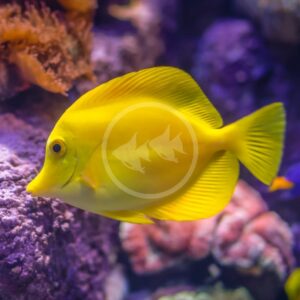

TANG – YELLOW Zebrasoma flavescens
$174.99 – $399.99Price range: $174.99 through $399.99HAWK – LONGNOSE Oxycirrhites typus
$129.99 – $159.99Price range: $129.99 through $159.99RABBITFISH – ONE SPOT FOXFACE Siganus unimaculatus
$119.99 – $199.99Price range: $119.99 through $199.99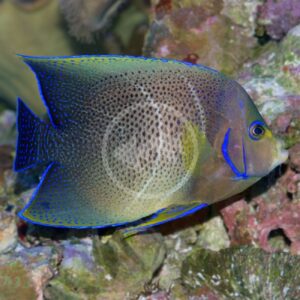
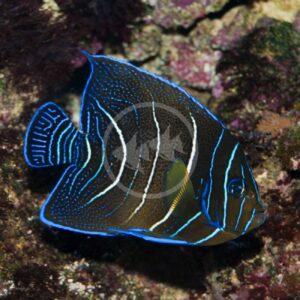
ANGEL – KORAN Pomacanthus semicirculatus
$89.99 – $189.99Price range: $89.99 through $189.99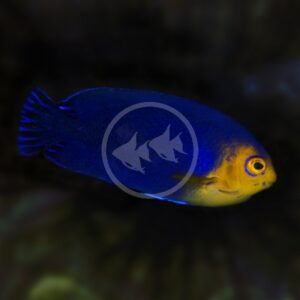

ANGEL DWARF – PYGMY ATLANTIC / CHERUB Centropyge argi
$69.99 – $99.99Price range: $69.99 through $99.99